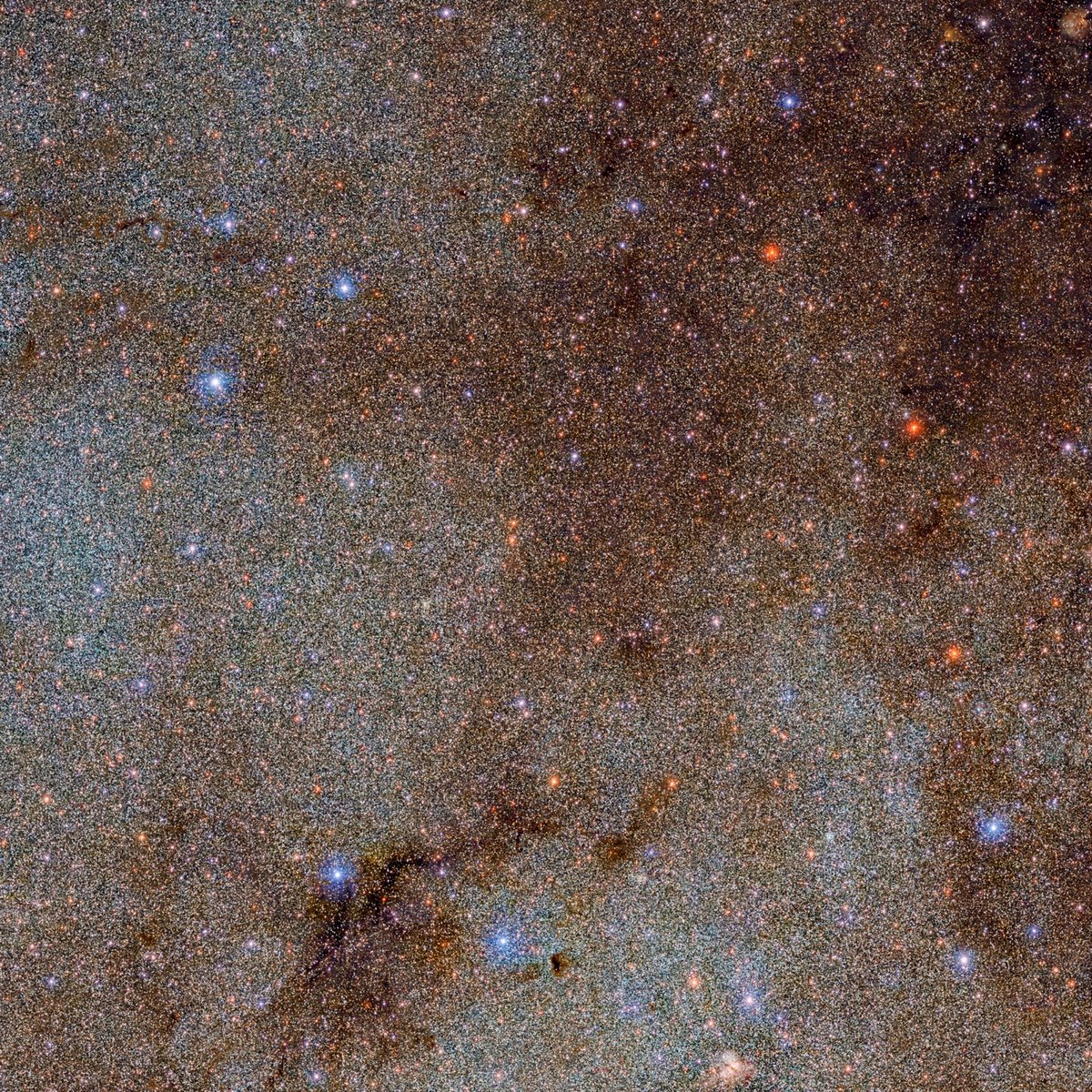New Massive Image of the Milky Way with 3.32 Billion Individual Objects


Thanks to a planet-wide collaboration, scientists have released an image of the Milky Way that contains 3.32 billion individually identifiable objects, most of which are stars.
Gathering the data required to cover this much of the night sky was a Herculean task; the DECaPS2 survey identified 3.32 billion objects from over 21,400 individual exposures. Its two-year run, which involved about 260 hours of observations, produced more than 10 terabytes of data.
Most of the stars and dust in the Milky Way are located in its spiral disk — the bright band stretching across this image. While this profusion of stars and dust makes for beautiful images, it also makes the galactic plane challenging to observe. The dark tendrils of dust seen threading through this image absorb starlight and blot out fainter stars entirely, and the light from diffuse nebulae interferes with any attempts to measure the brightness of individual objects. Another challenge arises from the sheer number of stars, which can overlap in the image and make it difficult to disentangle individual stars from their neighbors.
It’s worth checking out the largest size of the image published on the web (which is actually much smaller than the image’s actual size) as well as a tiny portion of the full image (second image above) that shows just how much detail is there. A zoomable interface for the entire image is available here.





Stay Connected